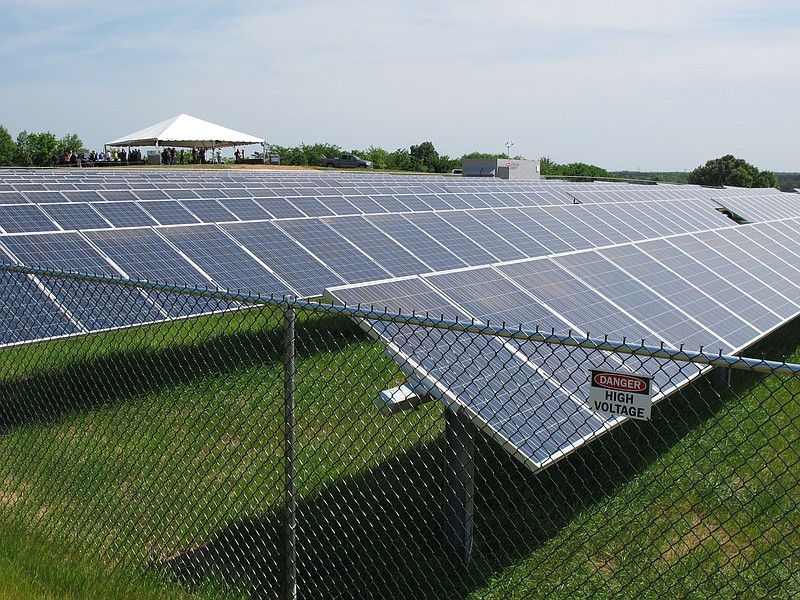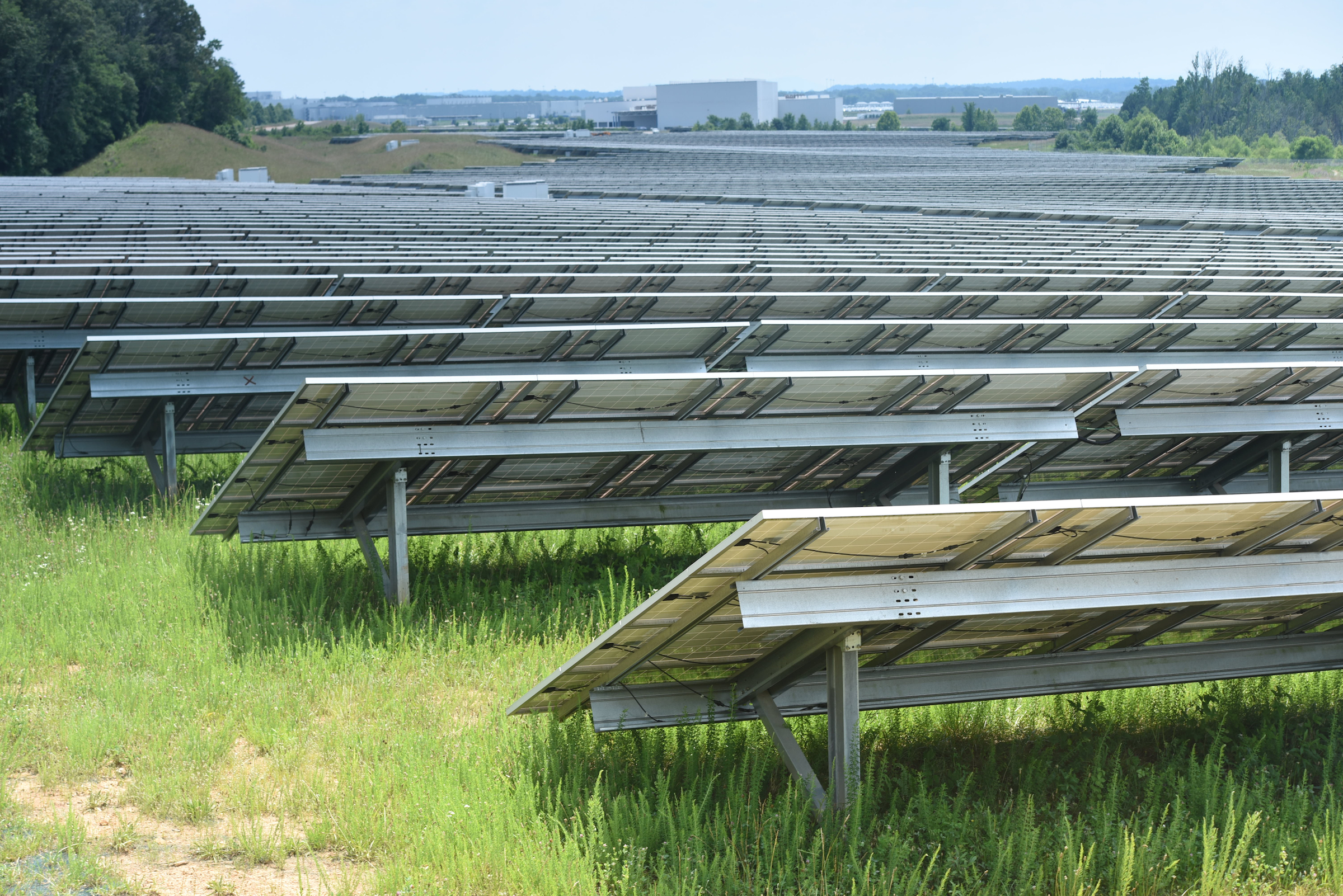The Tennessee Valley Authority, which went underground to generate most of its power from coal a generation ago, is looking up to the sun for more of its power in the future.
In response to its request for proposals, TVA is boosting its solar energy capacity by 44% from a year ago by adding 484 megawatts of new contracted solar generation, including a $200 million solar farm announced this week near Columbus, Mississippi that would both generate and store electric power.
"This is the first time that we're announcing a solar project that is at the right price that if customers want it, we can offer this renewable power to them, and if not enough customers want this power we will buy it for our system needs," said Doug Perry, TVA's vice president of commercial energy solutions. "And it will come with a 50-megawatt battery - our first utility-scale battery."
TVA also has begun studying whether to buy 2,474 acres in Alabama to build up to a 227-megawatt solar farm - the biggest solar generation project owned by TVA.
"TVA can design, build, own and operate solar units very cost effectively, especially now as the efficiency of solar panels has increased and the costs of solar generation has gone down," TVA President Jeff Lyash said Tuesday. "But we want to continually test the market to see what is most cost effective for our customers."
But as the federal utility boosts its own solar generation and the purchase of more utility-scale solar energy, it is shifting away from its earlier support for small rooftop solar power. Critics claim the change will limit the growth of a key element in solar power generation.
TVA has cut its support for customers who generate electricity with rooftop or small solar installations in favor of buying or building larger utility-scale solar projects to support its Green Invest program, which delivers renewable energy to customers like Google, Facebook and Amazon that are increasingly demanding it. Lyash said TVA's shift in its solar strategy is more cost effective since larger utility-scale solar farms can be up to four times more effective than some smaller rooftop solar panels.
TVA paid up to 21 cents a kilowatthour under its Green Power Providers program 20 years ago, but the rate TVA now pays is only a fraction of that price.
"We paid those premium prices initially to help stand up an industry in the Valley and that was successful with up to about 4,000 installation (of solar generation across TVA's 7-state region," Lyash said.
Perry said "the solar market is now mature" and TVA no longer sees the need to try to promote rooftop solar panels if it rquires a premium price that is born by others in the Valley who don't install solar.
TVA has cut the price it pays its customers who put solar-generated power back on the grid first to the retail cost of its delivered power and then ultimately to its power replacement rate of only a few cents per kwh.
"That has effectively killed rooftop solar and leaves TVA behind most other utilities in the Southeast in the share of power it gets from solar," said Stephen Smith, executive director of the Southern Alliance for Clean Energy.
Smith and other environmentalist backing more residential solar generation said smaller electric utilities than TVA in Florida, Georgia and North Carolina generally have twice as much solar generating capacity as TVA.
"TVA is fundamentally failing to embrace renewable energy as a key strategy," said Maggie Sober, utility reform director for the Southern Alliance for Clean Energy who said TVA's pricing strategy results in "anti-solar rate changes."
TVA is working with the 154 local power companies that distribute its electricity across its 41,000-square-mile service territory to allow for more distributed generation from solar and other renewable sources. But Lyash said TVA is looking for the most cost-effective ways to generate low-cost reliable and clean power and utility-scale solar makes more sense than subsidizing small solar units.
TVA, which already gets more than 60% of its power from non-carbon sources like nuclear, hydro, wind and solar, is planning to boost its solar generation as part of its strategy to generate 70% of it power from carbon free sources by 2030 and to raise its non-carbon power sources to 80% or more by 2040. The long-range power plan adopted by TVA directors last August calls for TVA to add as much as 14 gigawatts of solar generation by 2040, or more than 20 times the amount of solar generation now in the Valley.
"We are moving to contract large volumes of solar for our customers, whether it's for large business customers through the Green Invest program, or smaller businesses or residential customers who use our Renewable Energy Certificate programs to help offset their carbon footprint," Perry said. "Some people are skeptical, but it is the truth. We need a lot of solar so we are going to continue to put out RFPs (requests for proposals) from solar developers and we are out on the hunt ourselves to build more solar farms."
Four additional projects have been contracted under TVA's new Green Invest program already on behalf of large business and industrial customers. The first Green Invest agreement between TVA, Nashville Electric Service, Vanderbilt University, and Silicon Ranch for 35 MW of new solar for the university was announced in January.
"Large-scale solar projects, which cost 75% less than residential rooftop solar, deliver the best value for renewables in the Valley," said Chris Hansen, TVA's director of origination and renewables.
Contact Dave Flessner at dflessner@timesfreepress.com or at 757-6340.

